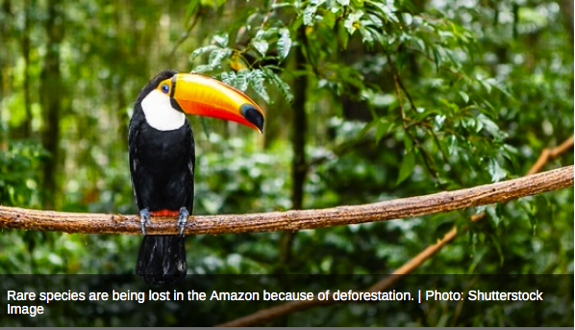
Bolivia's Rainforest 'Could Disappear' by 2100
March 22, 2016 - telesur.net
On World Forestry Day, conservationists have issued a stark warning about the long-term survival of Bolivia's rainforest.
Every year 200,000 hectares of pristine Bolivian rainforest is lost to deforestation, wildfires and the construction of cattle ranges. The knock-on effects for producers and farmers in the region is devastating.

Amazonian farmers in Bolivia earn up to 75 percent of their income from the forest, foraging for Brazil nuts, cacao and the acai fruit.
Biologist Vincent Vos has worked on agro-forestry farming projects in the Bolivian Amazon for many years and has seen firsthand how such disasters can destroy entire communities.
"Back in 2010, in the municipality of River Alto, 90,000 hectares burned down including 22,000 hectares of primary rainforest," Vos told teleSUR.
"People had to leave their land and their homes because there were no natural resources left," he added.
It's a frightening prospect for communities dependent on the rainforest to earn a living.
One farmer, whose family have depended on the Amazon for generations, says the wildfires can come in an instant and ruin months of hard earned labor.
"The fire took whatever it wanted, we didn't know how to defend ourselves. We have lost a lot, we used to work so hard but we lost it all in a matter of just half an hour, " said the farmer.
Bolivia has one of the highest rates of deforestation in the world. The loss of thousands of hectares affects the biodiversity of the Amazon, precious species are lost that can never be replaced.
To mark World Forestry Day, conservationists and biologists have called on governments to invest resources in sustainable development projects such as agro-forestry systems.
Trees and shrubs are planted among crops to help create more productive, sustainable and profitable use of the land. The projects are proven to help sustain the long-term survival of forestry species.
The Bolivian government has pledged US$30 million for sustainable development programs in the Amazon over the next five years.
But for every U.S. dollar invested in conservation projects US$100 are set aside for unsustainable projects such as the construction of highways and hydroelectric dams.
Conservationists say US$30 million is not be enough to save the rainforest.
They claim that by the year 2100 Bolivia's rainforest will have disappeared; transformed into grassland because of the effects of climate change and logging.
For the producers who've lived in the Amazon for generations, this is a worrying development.
Even as they continue to adapt their methods of farming and cultivation, just like the Amazon itself, their way of live could face extinction in just a few decades.